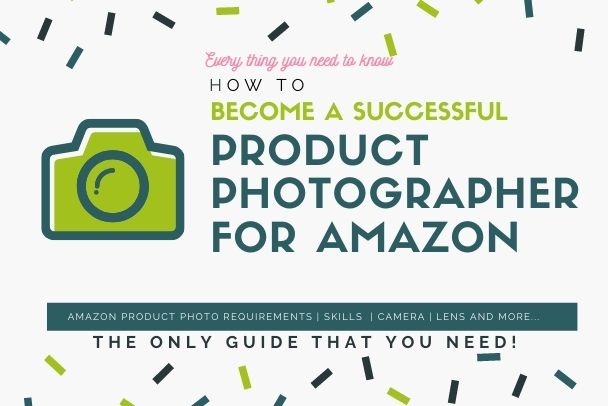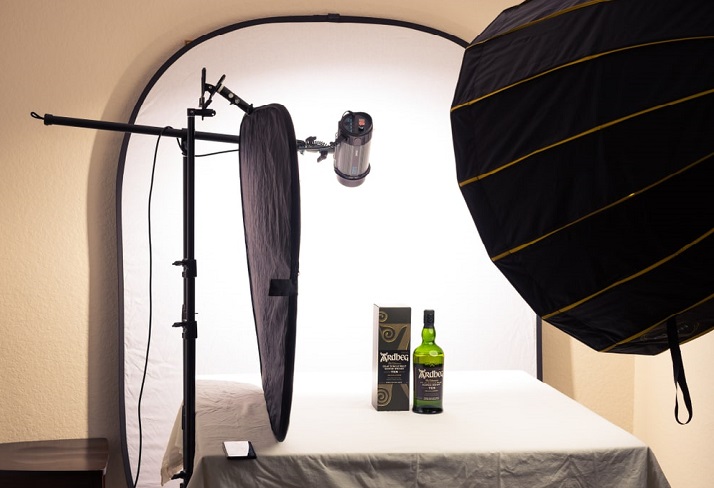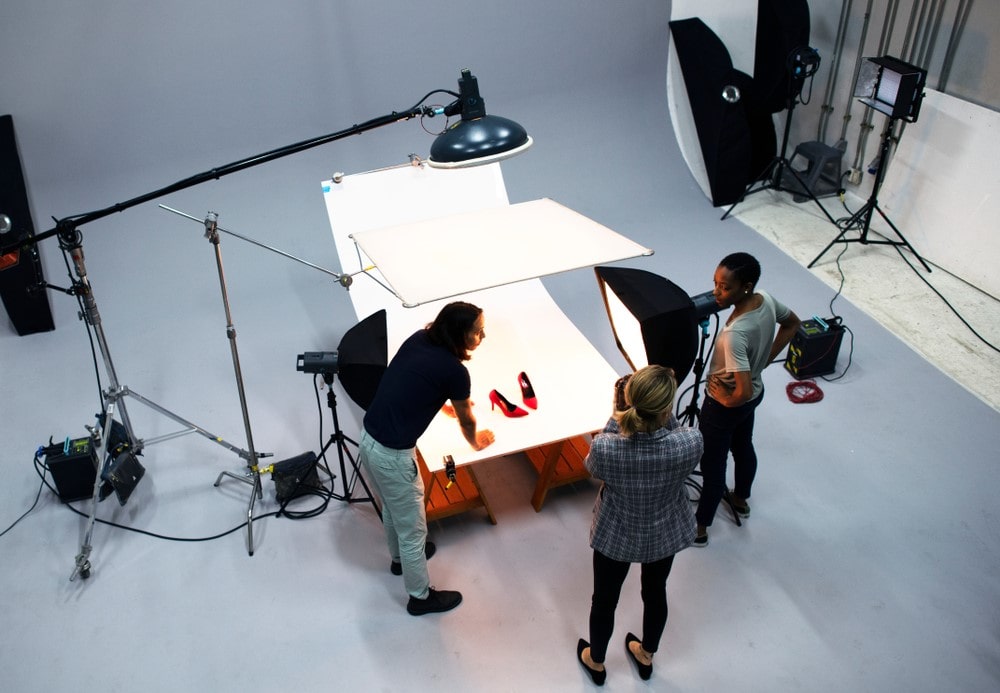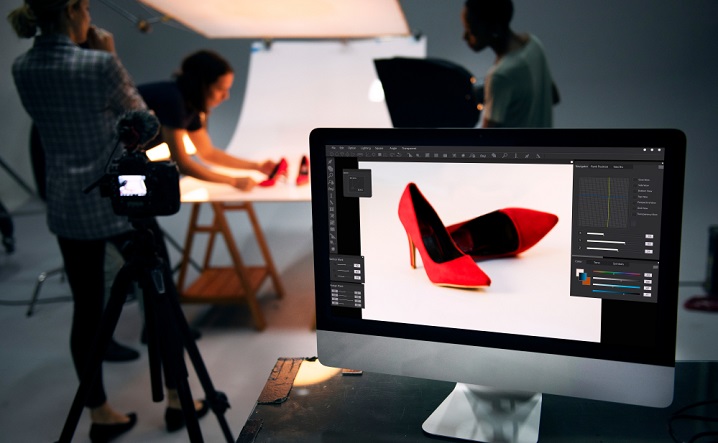8 Steps to Become a Successful Product Photographer for Amazon


Becoming a Product Photographer for Amazon is not different than other marketplaces. If you want to become a professional photographer for Amazon, this is the single guide for getting you started.
There's no doubt Amazon is one of the top opportunities for sellers. That also makes the photography career for amazon demanding.
If I assume you are looking to start a career in the photography industry. And now you are unsure about where to start. Or, you are into photography for a while now. You are looking for an excellent opportunity in the relative fields. So, why don’t you try Amazon Photography?
As you know, Amazon is considered to be the world’s biggest e-commerce website. Millions of products are sold daily to customers all around the globe. All of these products are viewed online.
So, how can those be appealing? Only through good quality product photography.
This article includes a guide on -
So let's get started...
Now, as you know what to do, everyone must know how to get started with their career. You see, there are a set of things that you need to make sure of before just hopping in the driver’s seat. These are as follows:
So, as you have the path now, let us start walking on the trail. Have no fear; I'll be guiding you step by step. Just observe and learn.
What Amazon's Best Sellers Have In Common: Because of its unique ranking system, it’s often a little trickier to know how well your products are doing on Amazon.
If you’re already an established photographer, there are plenty of factors to keep in mind. From how many photos are in each product listing, to how large your image is in comparison with your competitors, there’s no one best way of preparing.
However, one thing that does seem universal amongst Amazon best sellers is that they have excellent photography; in fact, 45% of their reviews cite poor photography as a primary reason for their negative reviews.
A photograph plays such a huge role in whether or not someone buys from you and studies show that we decide whether or not to buy something within seconds of seeing it.
It seems obvious then, that great pictures (and lots of them) should be your top priority when setting up on Amazon—but don’t overlook other crucial elements like design and description which will help determine whether people read more about your item or skip right past it to another seller's page.
Another important aspect of preparation that isn't always easy is managing expectations. You might find yourself selling far more items than you were expecting, which may mean even longer working hours until your business has found its steady pace again.
This could mean temporarily outsourcing some editing tasks so you can keep up with demand without sacrificing quality, for example. Some Amazon photographers even recommend only charging customers once you've delivered finished images because when demand outweighs supply, customers can get antsy.

For any photography, you need to have some excellent skills under your sleeves. Because this is not just any amateur photography, this is a legit profession. So, you need to make a good impression with your photos.
In this way, you can curate more clients organically. So, having a good sense of the basics is a must.
In general, a product photographer for amazon charges $75-$150 an hour. So the competition is moderate. If one lack the basic skills it'll be clanging to survive.
Speaking of basics, here are some of the core skills you need to have for product photography:

The product photo is the single most important thing that attracts consumers. In fact, 75% of consumers Rely on product photos to decide while buying.
On a web store like amazon, you may probably find hundred of sellers offering the same products.
So the primary objective that a product photo should have is the ability to attract and stand out from the rest.
Now, Amazon allows 7 types of product photos. And they have individual requirements. So, you need a clear understanding of them. In this article, I have discussed them below in detail.
This is what probably pops into your mind fast. Generally, this doesn't need to require high equipment.
You can start with any standard DSLR camera. Later, you can go for an expensive one.
However, when you are picking a lens, you need to make sure that it is capable of shooting small products.
You know products have different types and sizes. Therefore, I would recommend picking at least two.
Because you'll need both Prime Lens and Zoom Lens more frequently.
There's a lot to know about camera lenses beyond aperture and focal length.
Take your time to learn more about lens and cameras.
You see, cameras are perhaps the most found device in this era. You have a smartphone, and it must have come with a decent camera.
So, the first step of photography is to start from the base. And smartphone cameras are the best to start.
Lighting or the orientation of light sources plays a significant role in photography. I always prefer to use natural sources.
But there'll be times when you'll not be able to find natural lighting. Then you'll have to rely on artificial ones. So, adjust and play!
During product photography, the camera must stand in a specific position. It should not jitter or move. Doing so might destroy the quality of the images. So, try using tripods or other stands to have a firm grip.
The core aspect of taking a good picture is the angle and the distance between the object and the camera lenses.
Using portrait mode allows the photographer to have a great viewing angle. Taking photos up close will enable you to grab the fine details.
Now, there is a common mishap of us that we kind of take a single picture. You see, if you are taking multiple sessions from different angles and orientations, you'll have the luxury to choose the best out of the herd.
So, you have all the skills and a sound studio and some sort of experience. Now, all you need is some clients to work for. But how will you get those? Simple by creating a portfolio. Make a portfolio online. A website will do just fine.
Now, what it will do is that it will create an identity, a platform to showcase your photos and talent. People will find you on the internet if you have a website. It will undoubtedly attract some potential clients. If everything goes right, you'll find good fortune as well!
In any sector, practice is the core foundation of excellence. If you are not into exploring and brushing up your talent, you'll not be able to shine.
So, to do well, you need to work hard. In this way, you can be a successful product photographer.
Now, as you have learned the basics, it is time to test your skills. But wait a bit. As you can see, Amazon has a lot of regulations regarding product images. But, have no fear. Once you get a proper grip on that, it will be a cakewalk for you.
What sets Amazon apart from other e-commerce websites? It is customer satisfaction.
When you search for a particular product on Amazon, what do you notice first? Yes, you guessed it right! The picture of the product.
Notice that the product is prosperous and smooth. On top of that, all the main photos of every product have a white background. I think it is understandable by now. Using a while background pumps up the quality and clarity of the image.
Now, it is clear to you why these product photos follow some basic rules. Amazon has been curating all of the product photos with great caution. So, there are a set of rules that takes the product to a whole new level.
These rules can be divided into three primary criteria:
Having a great image is one thing, and having the right one is another ball game. Amazon has a distinct set of rules for the parent and the child SKU images.
For the public image:
As Amazon deals with millions and millions of products, it is crucial to recognize the right picture for the right photos. So, it is vital to name the images correctly.
To do that, you'll have to follow the rules:
You see, there are different types of product photos you'll know when you'll be raiding a particular product on Amazon.
These are very crucial from a customer perspective because you do not see the product firsthand.
So, it is imperative to give you a good idea about the product through information and more specific, graphical information like photos and videos.
There are three distinct types of pictures and one type of listing video that can be added to the description as we speak.
Let us describe the three different types of product listing photos below:
Perhaps the first stock-keeping unit (SKU) picture will see when searching for a particular product. It will be of pristine quality. It is to make sure that you have a definite idea about the product.
The background will be absolute white (RGB 255:255:255). The edges will be smooth, and you can also zoom in to the elaborated resolution. This makes Amazon the best in the business for understanding the thought process of a customer.
These are the pictures you'll see along the side or the bottom of the mother's picture. These are simply the variant pictures of the product itself. So, it is helpful for the customers to choose between the available variants.
Here, you'll have seven slots where you can use images that have the potential to showcase your products. It will undoubtedly boost your sales as well as you can use those for promotional benefits as well.
Product benefits highlighting using images are good rather than writing those down in the description. You can also display pictures that explain the product’s usage or simply demonstrate the product in action.
Another strong content is the comparison pictures. You see, there are a lot of questions and doubts in the minds of the customers.
Besides, you can quickly eliminate those down beforehand by showing the benefits and comparing them with fellow competitors.
As you have learned all the types of images and brushed your skills, it is time to build the playhouse. To be a great product photographer for Amazon, you'll have to set up a studio. Trust me, and it will save you an awful lot of time and effort.

A studio is mainly a workspace for photographers. Here, you'll be planning and executing a photoshoot. Product photography needs a proper studio environment. So, to take some stunning photos, setting up a studio is a must.
Now, to set up a studio, it is crucial to see specific requirements. Here are the basic needs of a standard product photography studio:
This is the prime weapon of a photographer. Now, there are a lot of options for cameras for you to choose from. But, you need to understand what you need and why you need it.
The primary cameras are:
Digital SLR cameras are the most common set of cameras in today’s market. A wide range of focal lenses is available for these cameras. But the main drawback is that these are a bit on the expensive side.
PAS or point-and-shoot cameras are less expensive. These are the first digital cameras, as some would prefer. These can be of great use. But the lenses are not available in this case. So, these cameras are suitable for DYI photography.
Lighting is yet another essential aspect of any photography. As you have guessed by now, it is hard to find natural light inside a studio. So, you'll have to arrange all the lighting and equipment artificially.
Now, as you are all set to hit the commercial market, it will be wise to buy useful quality lighting softboxes. You can also adjust the lumen count and the brightness as per your needs. Another thing is that you need good quality tripods and backdrops.
A good photographer knows what the client wants and what to feed them. You'll have to feel the client’s need. If you can do that, you'll produce pictures that will make them happy. But it takes dedication and determination.
A business website is one of the best tools you can have when trying to attract clients. However, deciding which features are important and how much time you should spend on your site isn’t always easy.
Here are some tips for creating a great-looking business website that will not only help your clients find you but encourage them to contact you as well.
The first and most important thing you want to do is come up with a pricing plan. In order to prepare your Amazon photography business for clients, you need to have all of your pricing plans ready so that when they ask you how much something will cost, you can be quick on your feet and respond immediately.
To begin, you need to set up your pricing plan and packages. Pricing plans are crucial because these will be a good representation of your business; after all, no one wants to pay $30/hour for a photographer when they can get it done with someone else at $15/hour. Plan out your prices, not just what you want them to be but when you are going to offer certain services.
So how does one prepare a photography business for clients? Fortunately, there are several ways in which one can market their business and create awareness about themselves. The most effective way of doing so is through networking with other photographers online and offline.
This will not only give your business more exposure but will also help you connect with potential clients. Using social media platforms like Instagram, Facebook, Twitter or even Google Plus is ideal for marketers as it gives them an easy way to reach out to people all over the world within seconds.
Additionally, you can use SEO services to get organic traffic and leads. A technique called white hat SEO involves creating high-quality content on a regular basis to draw people to your website, who in turn will become interested in what you have to offer. Once they visit your site they may end up buying something from you if they were satisfied with what they found.
You can use hashtags while posting pictures on these platforms to promote your products or services while also giving your company recognition. You should always make sure that you’re up-to-date on any trends related to the marketing photography business before making such strategies part of your plans.
In order to find success in marketing your photography business, it’s important that you provide value first rather than just focusing on profits right away.
You see, the impression is everything. You might be a good photographer, but if your approach and work style is not professional, clients will not like your work clients will not want your work.
So, there are certain aspects that you need to see before submitting your assignments:

This is yet another crucial prospect of product photography. You need to put in some final touches to your work. If you manage to do so, then your work will be appreciated entirely. Thus it is important.
As we are working for Amazon Products, it is mandatory to work with white backgrounds. You can either use pre-made lightboxes. Those are effective. But when you are working with large items, screens are the go-to solution for white background. Good lighting and a new environment will undoubtedly do the trick for you.
Images do require some last touches. A slight adjustment in the colors or removing some unwanted spots from the background does matter in the long run. So, it is vital to make a good retouch at the very end of the production.
To create photos that sell, you must not forget the details. The product image needs to be flawless and natural. You should not deploy any image or editing that creates a face vibe.
Speaking of that, the editing is beneficial are-
You see, Amazon Product Photography is a great way to elevate your passion for photography. Yes, I do admit that this requires a unique set of skills. Other platforms or genres do not need those. But this is Amazon! That is why they are so good at selling products!
I hope you have enjoyed all the insights today. I do expect all of you to have a good read of the tiny details here. I do wish you guys to share your though. Also, do let me know if I missed something. Till then, I bid farewell.
You may read: